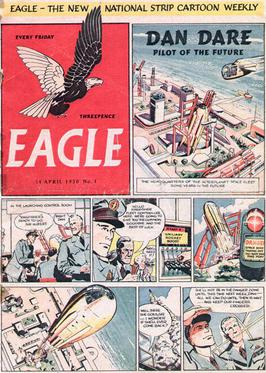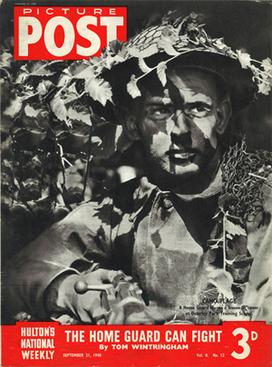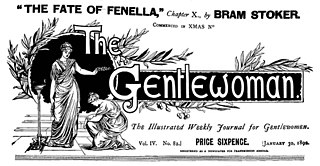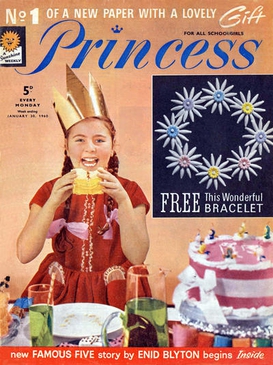Related Research Articles

The Royle Family is a British sitcom produced by Granada Television for the BBC, which ran for three series from 1998 to 2000, and specials from 2006 to 2012. It centres on the lives of a television-fixated Manchester family, the Royles, comprising family patriarch Jim Royle, his wife Barbara, their daughter Denise, their son Antony and Denise's fiancé David.

The Swinging Sixties was a youth-driven cultural revolution that took place in the United Kingdom during the mid-to-late 1960s, emphasising modernity and fun-loving hedonism, with Swinging London denoted as its centre. It saw a flourishing in art, music and fashion, and was symbolised by the city's "pop and fashion exports", such as the Beatles, as the multimedia leaders of the British Invasion of musical acts; the mod and psychedelic subcultures; Mary Quant's miniskirt designs; popular fashion models such as Twiggy and Jean Shrimpton; the iconic status of popular shopping areas such as London's King's Road, Kensington and Carnaby Street; the political activism of the anti-nuclear movement; and the sexual liberation movement.

The Windmill Theatre in Great Windmill Street, London, was a variety and revue theatre best known for its nude tableaux vivants, which began in 1932 and lasted until its reversion to a cinema in 1964. Many prominent British comedians of the post-war years started their careers at the theatre.

Eagle was a British children's comics periodical, first published from 1950 to 1969, and then in a relaunched format from 1982 to 1994. It was founded by Marcus Morris, an Anglican vicar from Lancashire. Morris edited a Southport parish magazine called The Anvil, but felt that the church was not communicating its message effectively. Simultaneously disillusioned with contemporary children's literature, he and Anvil artist Frank Hampson created a dummy comic based on Christian values. Morris proposed the idea to several Fleet Street publishers, with little success, until Hulton Press took it on.
Macmillan Publishers is a British publishing company traditionally considered to be one of the "Big Five" English language publishers. Founded in London in 1843 by Scottish brothers Daniel and Alexander MacMillan, the firm soon established itself as a leading publisher in Britain. It published two of the best-known works of Victorian-era children's literature, Lewis Carroll's Alice's Adventures in Wonderland (1865) and Rudyard Kipling's The Jungle Book (1894).

Picture Post was a photojournalistic magazine published in the United Kingdom from 1938 to 1957. It is considered a pioneering example of photojournalism and was an immediate success, selling 1,000,000 copies a week after only two months. It has been called the UK's equivalent of Life magazine.

Lilliput was a small-format British monthly magazine of humour, short stories, photographs and the arts, founded in 1937 by the photojournalist Stefan Lorant. The first issue came out in July and it was sold shortly after to Edward Hulton, when editorship was taken over by Tom Hopkinson in 1940: his assistant editor from 1941 to 1948 was Kaye Webb. During the 1950s Lilliput was edited by Jack Hargreaves. It had a reputation for publishing what were, for the time, fairly daring photographs of female nudes.

The Illustrated London News, founded by Herbert Ingram and first published on Saturday 14 May 1842, was the world's first illustrated weekly news magazine. The magazine was published weekly for most of its existence, switched to a less frequent publication schedule in 1971, and eventually ceased publication in 2003. The company continues today as Illustrated London News Ltd, a publishing, content, and digital agency in London, which holds the publication and business archives of the magazine.

Albert William Thomas Hardy was an English documentary and press photographer known for his work published in the Picture Post magazine between 1941 and 1957.

Tiger was a weekly British comics periodical published by Amalgamated Press, Fleetway Publications and IPC Magazines from 11 September 1954 to 30 March 1985. The title was initially launched in a large tabloid size to mimic newspapers; while it featured some action-adventure stories Tiger contained a large number of sport strips. The most famous of these was "Roy of the Rovers", which debuted in the first issue and was the comic's most popular feature, eventually transferring to its own comic in 1975. Tiger would go on to become one of the company's longest-running titles, with 1,573 issues published before being merged with Eagle in 1985. Over the course of its run, Tiger featured columns by numerous famous sports figures, including Ian Botham, Geoff Boycott, Tony Greig, Trevor Francis and Charlie Nicholas.

The Comet was a weekly British comics periodical published by J.B. Allen and later Amalgamated Press and Fleetway Publications from 20 September 1946 to 17 October 1959. Initially a children's newspaper, The Comet was transformed into a boys' adventure comic in May 1949 by editor Edward Holmes when J.B. Allen were purchased by Amalgamated Press. Also known as Comet Comic, The Comet Adventure Weekly, Comet Weekly and simply Comet as various points the title continued until October 1959, reaching 580 issues before being merged with another AP boys' comic, Tiger.
John Bull is the name of a succession of different periodicals published in the United Kingdom during the period 1820–1964. In its original form, a Sunday newspaper published from 1820 to 1892, John Bull was a champion of traditionalist conservatism. From 1906 to 1920, under Member of Parliament Horatio Bottomley, John Bull became a platform for his trenchant populist views. A 1946 relaunch by Odhams Press transformed John Bull magazine into something similar in style to the American magazine The Saturday Evening Post.
Stefan Lorant was a pioneering Hungarian-American filmmaker, photojournalist, and author.

Sir Henry Thomas Hopkinson was a British journalist, picture magazine editor, author, and teacher.
Sir Edward George Warris Hulton was a British magazine publisher and writer.

Gertrude Helene "Gerti" Deutsch (1908–1979), also known as Gertrude Hopkinson, was an Austrian-born British photographer. She is best known for her work for the magazine Picture Post, from 1938 until 1950.

The Gentlewoman was a weekly illustrated paper for women founded in 1890 and published in London.
Hans Felix Sigismund Baumann aka Felix H. Man was a photographer and later an art collector. In particular, he was a leading pioneer photojournalist, especially for Picture Post.
Godfrey Thurston Hopkins (16 April 1913 – 27 October 2014), known as Thurston Hopkins, was a British Picture Post photojournalist and a centenarian.

Princess was a British weekly girls' comic anthology published by Fleetway Publications and, later, IPC Magazines. The first version was published between 30 January 1960 and 16 September 1967, and featured a mix of comic strips, text stories and a large proportion of features; it was merged with Tina to form a new title - Princess Tina - after 399 issues.
References
- ↑ Deany, Paul (2004). Bill Brandt: A Life. Stanford University Press. ISBN 978-0804750035.
- ↑ Meister, Sarah Hermanson; Daffner, Lee Ann (2013). Bill Brandt: Shadow and Light. New York: The Museum of Modern Art. ISBN 978-0870708459.
- ↑ "Books: Weekly Illustrated". Amazon.co.uk . UK: Amazon . Retrieved 25 January 2018.
- ↑ Bradford, Lynda (8 November 2012). "Queen Mary "Weekly Illustrated" Special". www.theqe2story.com. The QE2 Story. Retrieved 25 January 2018.